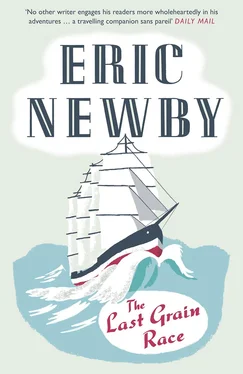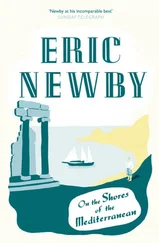Near the window, in a polished brass shell-case of a Gatling gun, stood a sheaf of large rockets with metal sticks which served the same decorative purpose as the Pampas grass in the front window of the next house. One Fifth of November Mr Mountstewart had appeared in our garden by Hammersmith Bridge with a number of these rockets which he fired off in series in the direction of the poorer and more inflammable parts of Fulham. They had disappeared into the night with a satisfying scream, and I am quite certain did a large amount of damage. Mr Mountstewart always maintained they were life-saving rockets but it is more probable that they had been constructed for offensive purposes at the time of the Napoleonic Wars.
The following year he appeared with a spherical object called a Gerb which he insisted was a firework. The bomb, for that is what it proved to be, was lowered into a thick iron mortar which was supposed to be deeply embedded in the earth. Unfortunately, this was not carried out properly, as the gardens were the common property of the flats in which we lived and it was felt that the grass would be damaged. It would have been cheaper to damage the grass. The initial explosion jerked the mouth of the mortar into an upright position, and instead of going over the river the Gerb, like its modern counterpart the V-2, shot vertically into the air with increasing velocity. At eighty feet it should have exploded, but it failed to do so and began to descend on us with a tremendous whining sound. In spite of his age, Mr Mountstewart was farthest from the Gerb when it finally exploded, breaking a number of windows.
I do not think my parents approved of Mr Mountstewart. In any event they never mentioned his name and my visits to his house became more or less clandestine. There I first read Slocum’s Sailing Alone Round the World and Shackleton’s South , with its description of the journey in a small open boat in the Antarctic winter from Elephant Island to South Georgia, and the subsequent crossing of that island on foot which resulted in the rescue of the rest of the members of the expedition.
I always felt that Mr Mountstewart resembled the Seafaring Rat in The Wind in the Willows who persuades the Water Rat to renounce everything and go to sea. By the time I had been at Wurzel’s a year his plans for me were nearly coming to fruition. Not only had he succeeded in making me think of nothing but sailing ships; he had also made me feel that discomfort and worse were preferable to my present situation. We would be discussing some proposed voyage and the victuals required and he would bring out the South American Pilot (Part 2) , which was full of passages like this:
Off Cape St. John, the eastern point of Staten Island, a heavy tide rip extends for a distance of five or six miles or even more, to seaward. When the wind is strong and opposed to the tidal stream the overfalls are overwhelming and very dangerous even to a large and well found vessel. Seamen must use every precaution to avoid this dangerous area.
A horrid picture of the Fuegian scene was conjured up by the following extract under ‘Refuge Station – Lifeboat’:
A refuge station has been established by the Argentine Government in this harbour (St. John), provided with a lifeboat for the assistance of shipwrecked mariners. A report made in 1911 states that there was only one inhabitant of Staten Island who had been left alone at Port Cook, in charge of some machinery for extracting fat from seals, for six years.
Mr Mountstewart’s strongest card in this game of getting me to sea was the one about time running out. For me time running out meant an outbreak of war, for him it meant waking one morning to find the seas stripped of four-masted barques. There were still in 1938 thirteen vessels entirely propelled by sail, engaged in carrying grain from South Australia to Europe by way of Cape Horn. There were other cargoes for these ships; timber from Finland to East Africa, guano (a sinister kind of bird dung) fom Mauritius and the Seychelles to New Zealand, and very rarely, for the two remaining German barques, cargoes of nitrate from Tocopilla, Mejillones and other ports on the Chilean Coast to be carried round the Horn to Hamburg. But for the most part the outward voyages from Europe to South Australia round the Cape of Good Hope and across the Southern Indian Ocean were ballast passages. Grain was the staple cargo. If that failed most of these thirteen ships would soon be rusting at forgotten anchorages.
The survival of the big sailing ships in this trade was due to several favourable circumstances. Grain was not dependent on season, neither was it perishable. In the primitive ports of the Spencer Gulf, where the grain was brought down from the back blocks in sacks, steamers found it difficult to load a cargo in an economical time. Although at some ports there were mile-long jetties, at most places the grain had to be brought alongside the ships in lightering ketches and slung into the hold with the vessel’s own gear, which might, and frequently did, take weeks. But a sailing ship run with utmost economy and a low-paid crew could still in 1938 take six weeks to load her cargo of 4,000 tons of grain, reach Falmouth or Queenstown for orders after 120 days on passage and still make a profit on a round voyage of about 30,000 miles, the outward 15,000 having been made in ballast.
Moshulu , Belfast Lough, September 1938
When I returned from my holiday, events started to happen with increasing momentum so that I began to feel like the central figure in one of those films of the twenties, in which the actors flash in and out of buildings in the twinkling of an eye. With suspicious promptness a letter arrived from Gustav Erikson in Mariehamn, in which that man of iron told me to get in touch with his London Agents, Messrs. H. Clarkson of Bishopsgate.
Captain Gustav Erikson of Mariehamn, ‘Ploddy Gustav’ as he was known more or less affectionately by the men and boys who sailed his ships, was in 1938 the owner of the largest fleet of square-rigged deep-water sailing vessels in the world. The great French sailing fleet of Dom Borde Fils of Bordeaux had melted away upon the withdrawal of government subsidies in the twenties; only two barques, Padua and Priwall , still belonged to the once great house of Laeisz of Hamburg; Erikson remained. He was not only the proprietor of twelve four- and three-masted barques, he also owned a number of wooden barquentines and schooners, the majority of which were engaged in the ‘onker’ (timber trade) in the Baltic and across the North Sea.
At the time I went to sea he was sixty-five years old. Unlike most twentieth-century shipowners he had been a sailor with wide practical experience before he had become a shipowner. At the age of nine he had shipped as a boy aboard a vessel engaged in the North Sea trade. Ten years later he had his first command in the same traffic and then, for six years, he had shipped as mate in ocean-going ships. Between 1902 and 1913, when he finally left the sea to concentrate on being an owner, he was master of a number of square-rigged vessels.
If I had imagined that Clarkson’s would be impressed when I approached them, I should have been disappointed. I was one of a number of Englishmen who applied to join the Grain Fleet every year, and Clarkson’s could not know that I was to be one of the last. From this small mahogany-bound office, saved from being prosaic by the numerous pictures of sailing ships on the walls, they looked after the destinies of practically every grain sailer in the world. Even the Germans came to Clarkson. In 1937 they fixed the high freight of 42s 6d a ton for the Kommodore Johnsen . Most cargoes were for British ports and Clarkson fixed the freights. Erikson was well served by them.
Читать дальше












